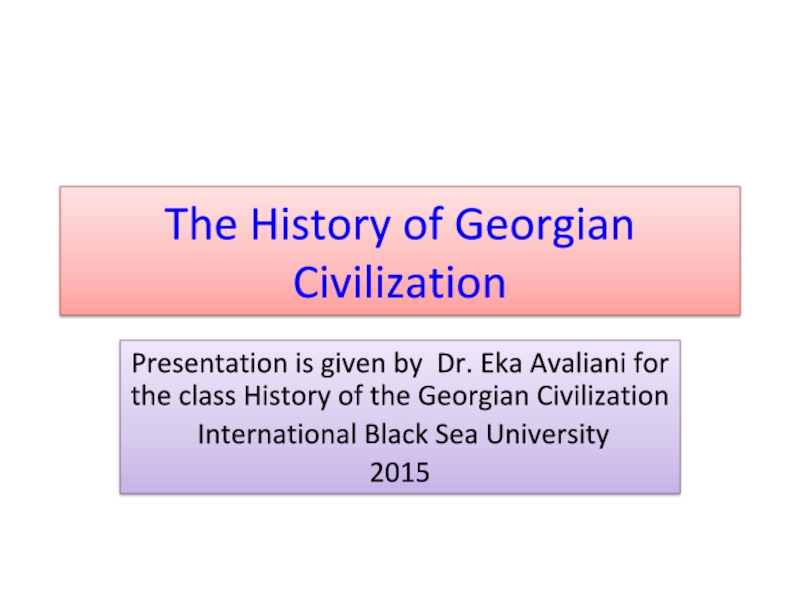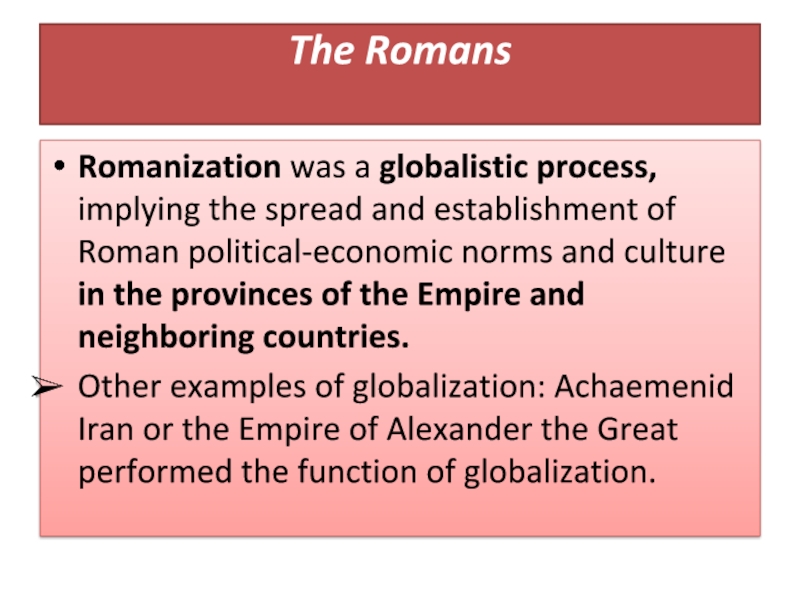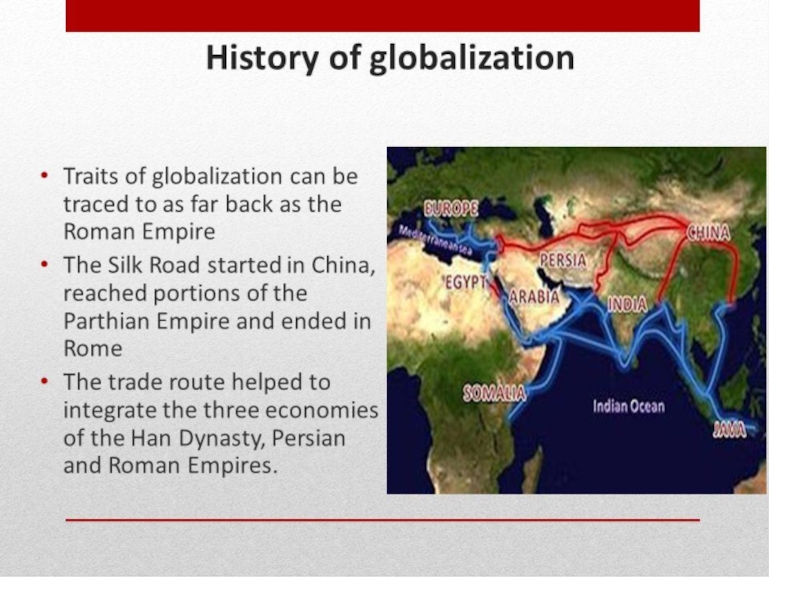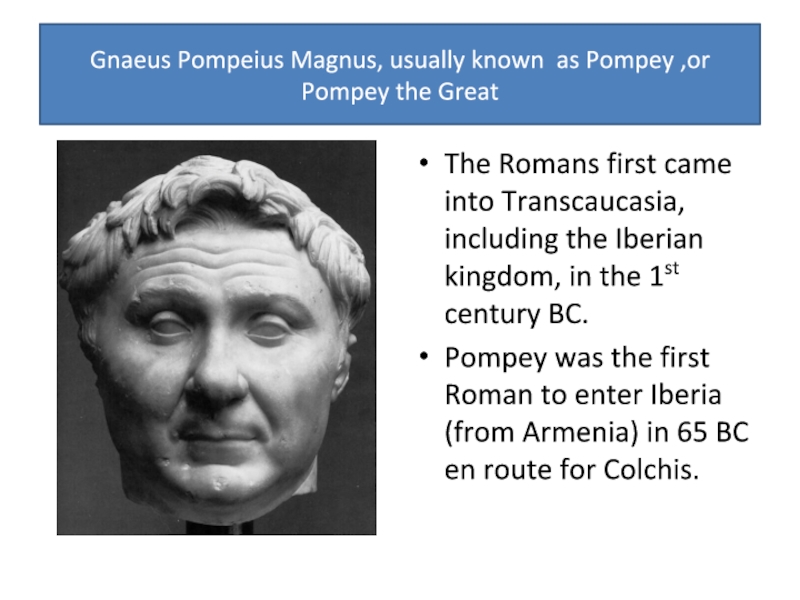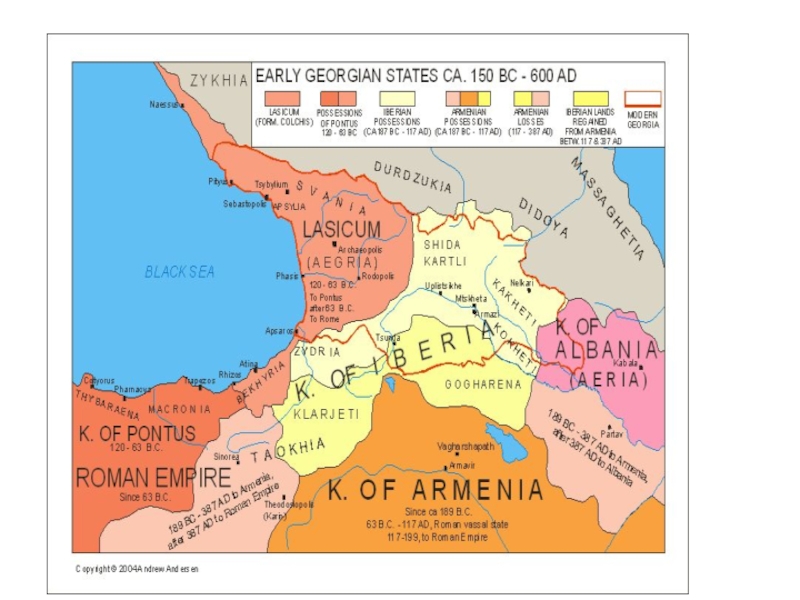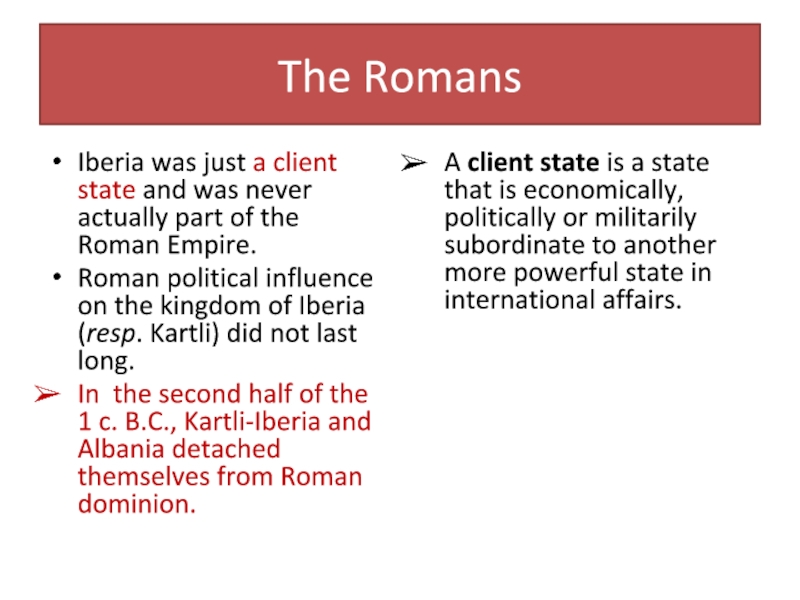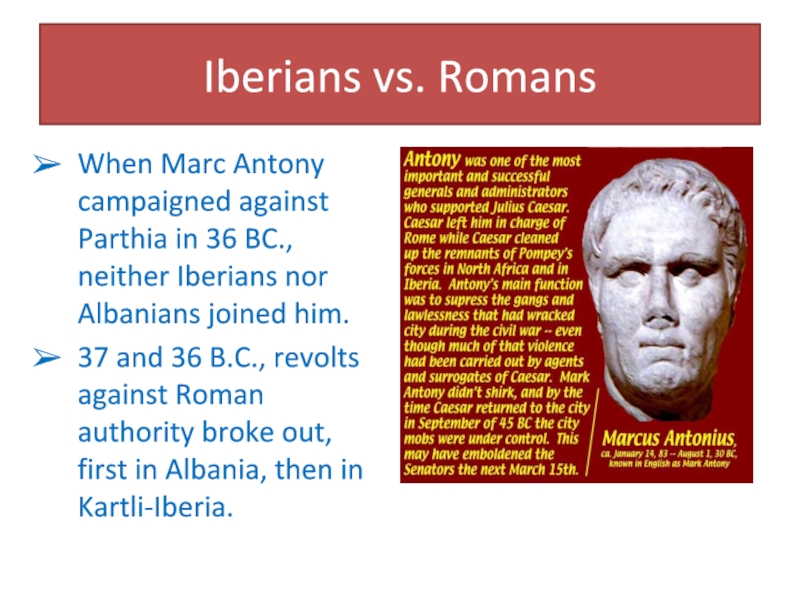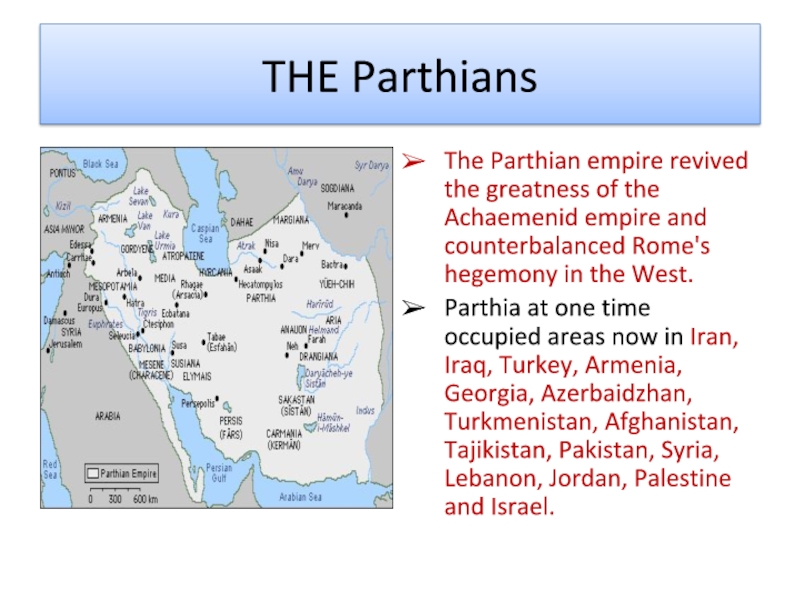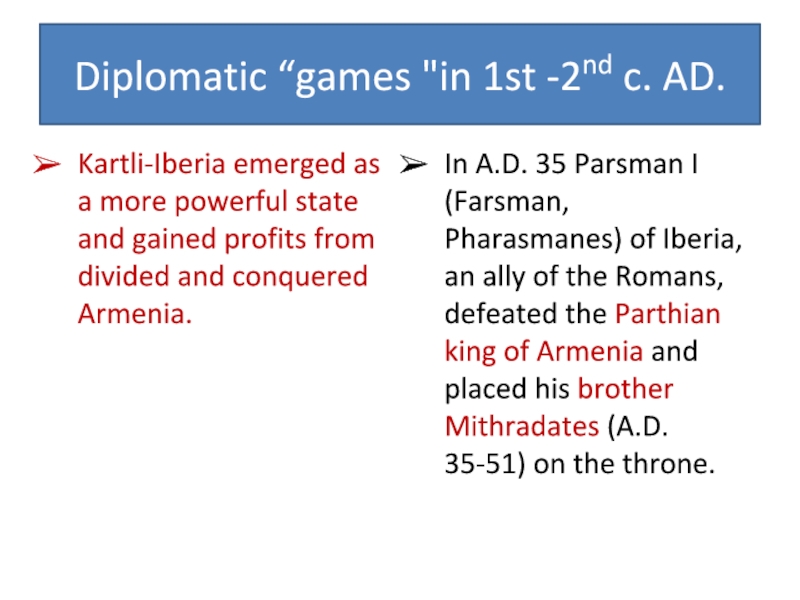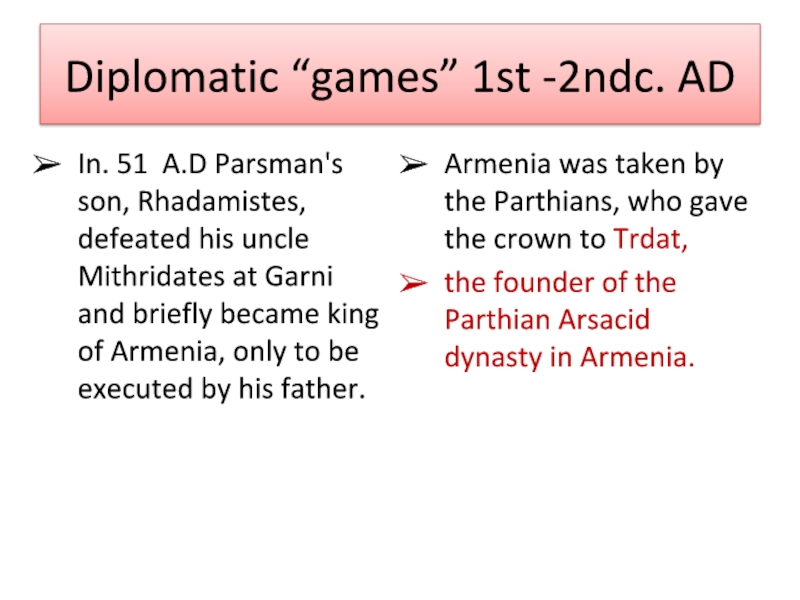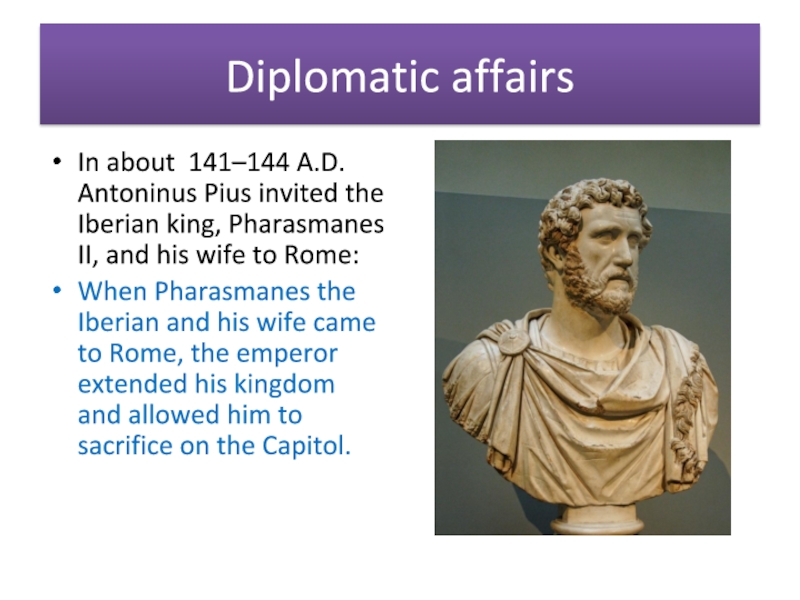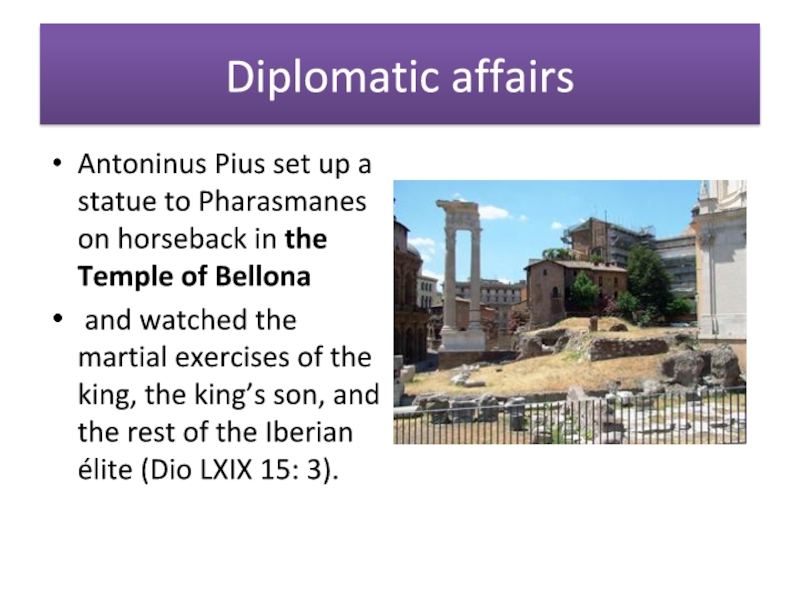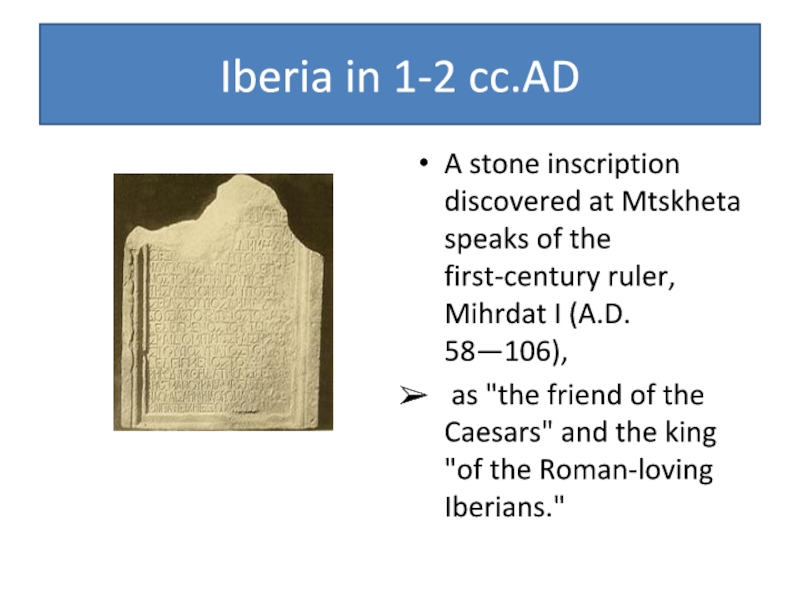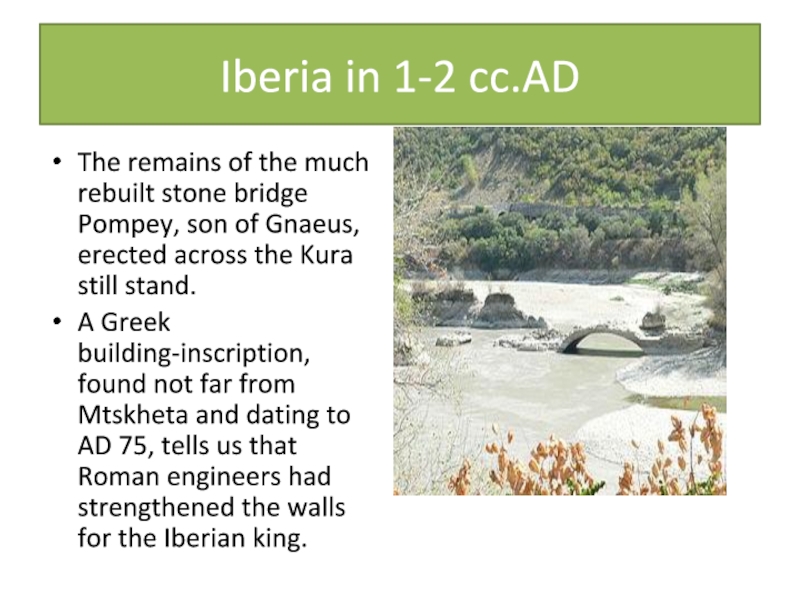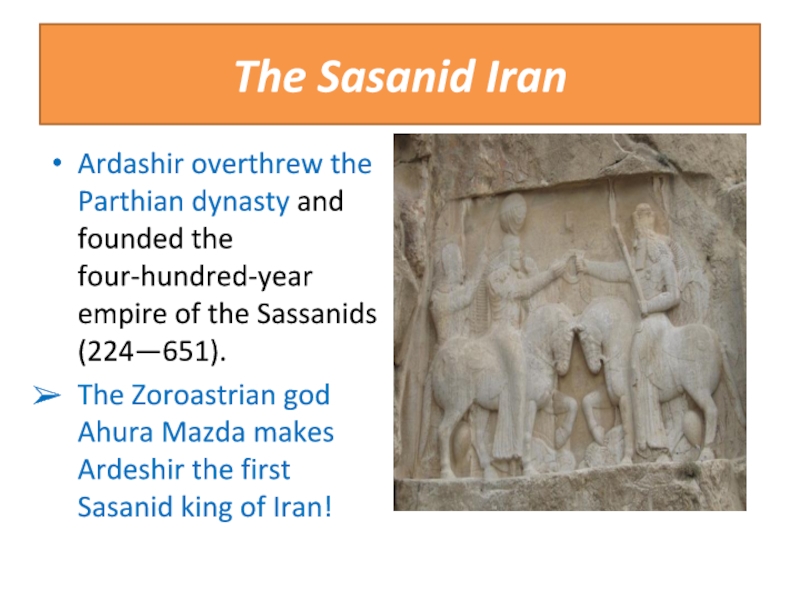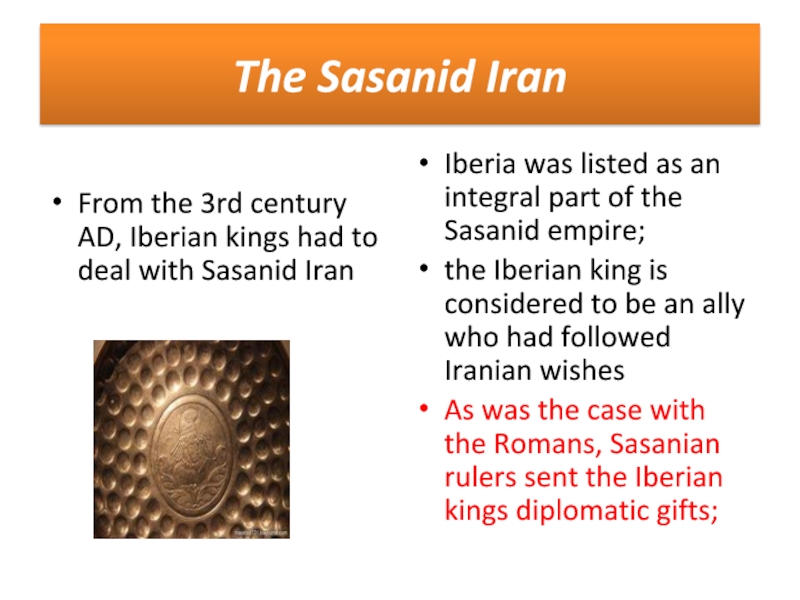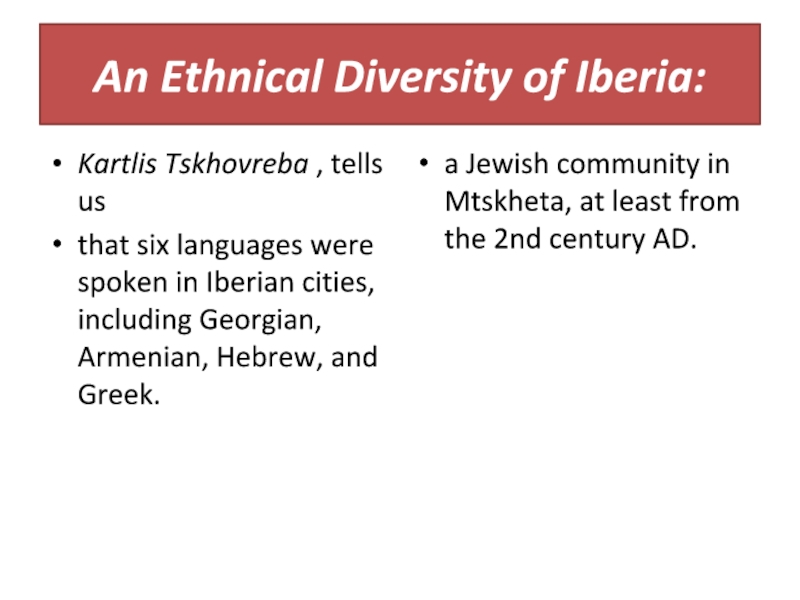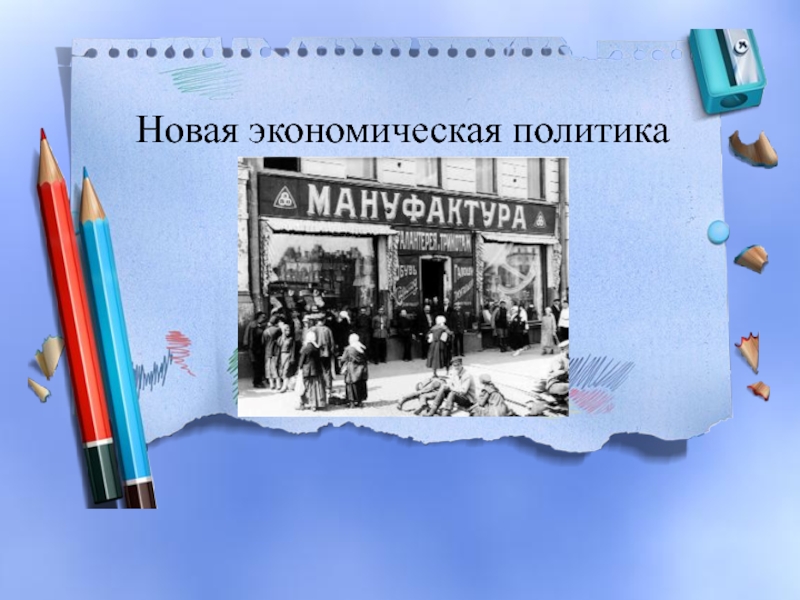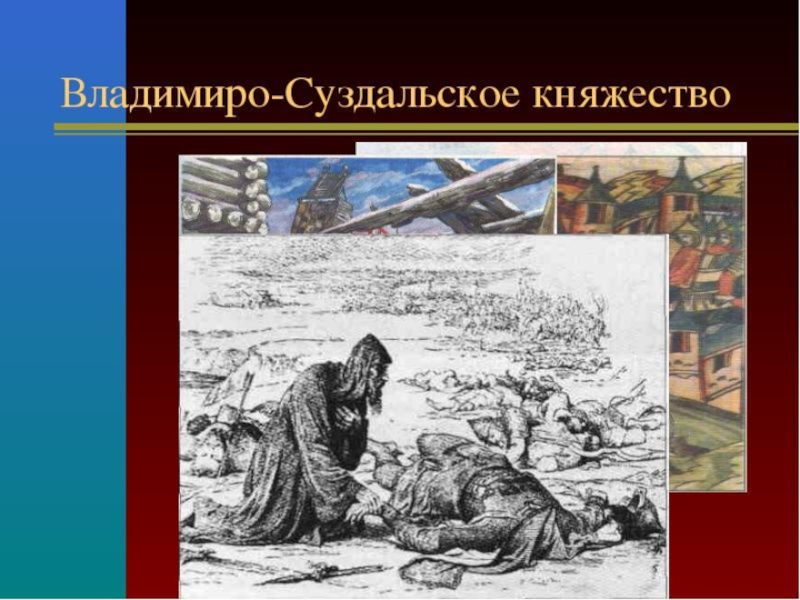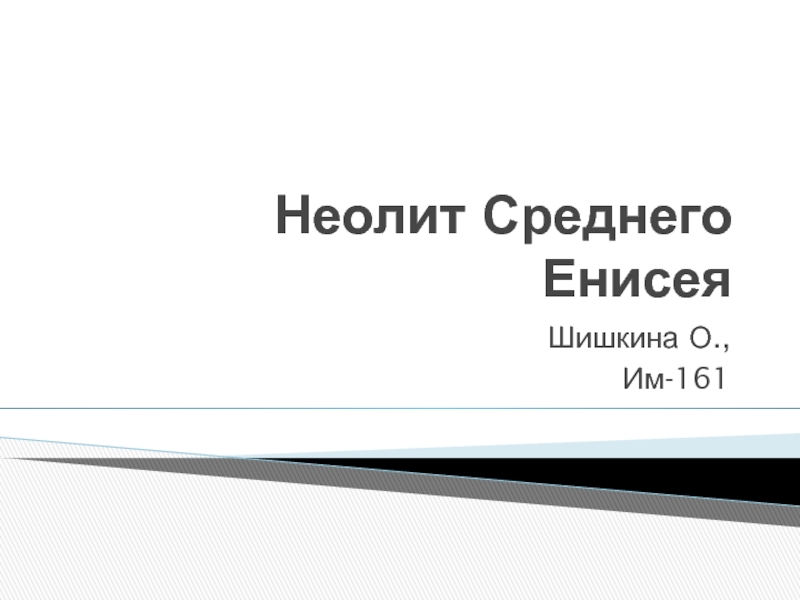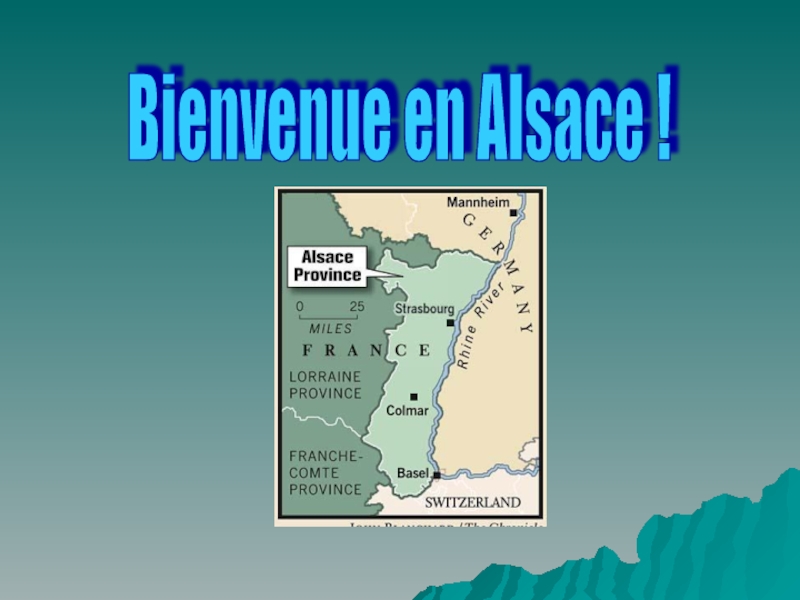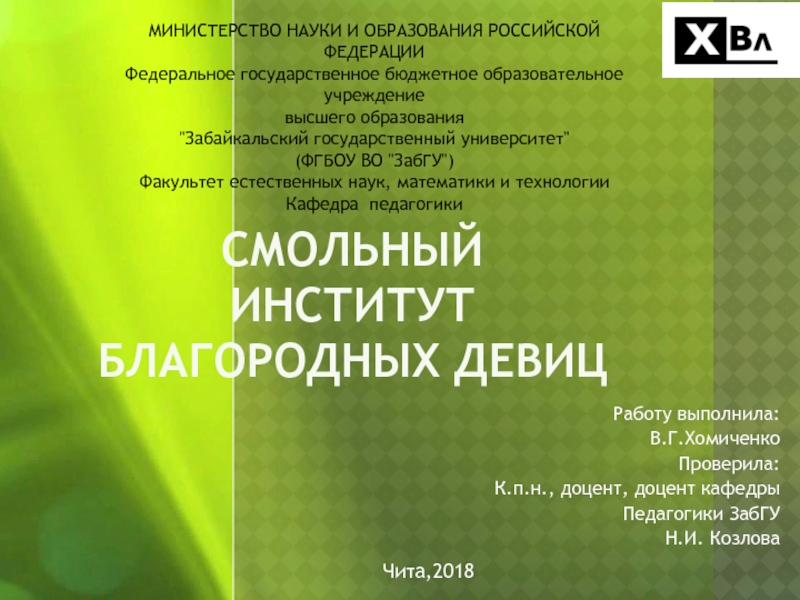- Главная
- Разное
- Дизайн
- Бизнес и предпринимательство
- Аналитика
- Образование
- Развлечения
- Красота и здоровье
- Финансы
- Государство
- Путешествия
- Спорт
- Недвижимость
- Армия
- Графика
- Культурология
- Еда и кулинария
- Лингвистика
- Английский язык
- Астрономия
- Алгебра
- Биология
- География
- Детские презентации
- Информатика
- История
- Литература
- Маркетинг
- Математика
- Медицина
- Менеджмент
- Музыка
- МХК
- Немецкий язык
- ОБЖ
- Обществознание
- Окружающий мир
- Педагогика
- Русский язык
- Технология
- Физика
- Философия
- Химия
- Шаблоны, картинки для презентаций
- Экология
- Экономика
- Юриспруденция
The history of Georgian civilization. (Lecture 5) презентация
Содержание
- 1. The history of Georgian civilization. (Lecture 5)
- 2. Iberia-Colchis, Foreigner Affairs, Policy and Cultural Influences
- 3. The Romans Romanization was a globalistic
- 5. Pax Romana In a number of provinces
- 7. Gnaeus Pompeius Magnus, usually known as Pompey
- 8. The Colchian coast was a strategic region
- 10. The Romans Iberia was just a client
- 11. Iberians vs. Romans When Marc Antony campaigned
- 12. Iberians vs. Romans The Roman legions under
- 13. Other historical actor- THE Parthians The
- 14. THE Parthians The Parthian empire revived the
- 15. Rome vs. Parthia
- 16. Diplomatic “games "in 1st -2nd cc. AD.
- 17. Diplomatic “games "in 1st -2nd c. AD.
- 18. Diplomatic “games "in 1st -2nd c. AD.
- 19. Diplomatic “games” 1st -2ndc. AD In. 51
- 21. Diplomatic “games” 1st -2ndc. AD. Iberia and
- 22. Diplomatic affairs In about 141–144 A.D.
- 23. Diplomatic affairs Antoninus Pius set up
- 24. Iberia in 1-2 cc.AD The residence
- 25. Iberia in 1-2 cc.AD A stone inscription
- 26. Iberia in 1-2 cc.AD The remains of
- 27. The Sasanid Iran Ardashir overthrew the Parthian
- 28. The Sasanid Iran and Iberia the Sassanids
- 29. The Sasanid Iran From the 3rd
- 30. An Ethnical Diversity of Iberia: Kartlis Tskhovreba
- 31. An Ethnical Diversity of Iberia: A Judeo-Aramaic
Слайд 1The History of Georgian Civilization
Presentation is given by Dr. Eka Avaliani
International Black Sea University
2015
Слайд 2Iberia-Colchis, Foreigner Affairs, Policy and Cultural Influences
The Romans
The Parthians
An Ethnical
Слайд 3The Romans
Romanization was a globalistic process, implying the spread and establishment
Other examples of globalization: Achaemenid Iran or the Empire of Alexander the Great performed the function of globalization.
Слайд 5Pax Romana
In a number of provinces of the Roman Empire, Romanization
technological processes, communication and East-West contacts, a process of assimilation and cultural syncretization of peoples, occurring in the annexed countries under the aegis of Pax Romana .
Pax Romana- means, Roman Peace
Слайд 7Gnaeus Pompeius Magnus, usually known as Pompey ,or Pompey the Great
The
Pompey was the first Roman to enter Iberia (from Armenia) in 65 BC en route for Colchis.
Слайд 8The Colchian coast was a strategic region for
the Caucasus
Asia
the Bosporus
Colchis were incorporated into Roman Empire as her provinces.
In the Eastern policy of Rome, the Black Sea area communications were indispensible in her rivalry with such powerful a state as Parthia.
The former Kingdom of
Colchis was re-organized by the Romans into the province of Lazicum
ruled by Roman legati.
The Romans
Слайд 10The Romans
Iberia was just a client state and was never actually
Roman political influence on the kingdom of Iberia (resp. Kartli) did not last long.
In the second half of the 1 c. B.C., Kartli-Iberia and Albania detached themselves from Roman dominion.
A client state is a state that is economically, politically or militarily subordinate to another more powerful state in international affairs.
Слайд 11Iberians vs. Romans
When Marc Antony campaigned against Parthia in 36 BC.,
37 and 36 B.C., revolts against Roman authority broke out, first in Albania, then in Kartli-Iberia.
Слайд 12Iberians vs. Romans
The Roman legions under Publius Canidius Crassus entered Georgia
By the last decade of the first century B.C., Kartli-Iberia and Albania were completely free from Rome.
Слайд 13Other historical actor- THE Parthians
The Parthian Empire is a fascinating period
Ruling from 247 B.C. to 228 A.D. in ancient Persia (Iran), the Parthians defeated Alexander the Great's successors, the Seleucids, conquered most of the Middle East and southwest Asia, controlled the Silk Road and built Parthia into an Eastern superpower.
Слайд 14THE Parthians
The Parthian empire revived the greatness of the Achaemenid empire
Parthia at one time occupied areas now in Iran, Iraq, Turkey, Armenia, Georgia, Azerbaidzhan, Turkmenistan, Afghanistan, Tajikistan, Pakistan, Syria, Lebanon, Jordan, Palestine and Israel.
Слайд 16Diplomatic “games "in 1st -2nd cc. AD.
Iberian kings successfully used Rome
The trade route that linked Eastern countries with the Western world via Georgia was in Rome’s economic and political interests.
The kingdom of Iberia played an active part in Rome’s foreign policy, emerging as her ally in the Near East (Tacitus and Dion Cassius ).
Слайд 17Diplomatic “games "in 1st -2nd c. AD.
The Emperor Augustus recognized Iberia
Armenia remained a bone of contention between Parthia and Rome into the first century A.D. It was divided.
Слайд 18Diplomatic “games "in 1st -2nd c. AD.
Kartli-Iberia emerged as a more
In A.D. 35 Parsman I (Farsman, Pharasmanes) of Iberia, an ally of the Romans, defeated the Parthian king of Armenia and placed his brother Mithradates (A.D. 35-51) on the throne.
Слайд 19Diplomatic “games” 1st -2ndc. AD
In. 51 A.D Parsman's son, Rhadamistes, defeated
Armenia was taken by the Parthians, who gave the crown to Trdat,
the founder of the Parthian Arsacid dynasty in Armenia.
Слайд 21Diplomatic “games” 1st -2ndc. AD.
Iberia and Rome fought Parthia and Armenia
when Roman suzerainty over Armenia was recognized by the Parthians in exchange for Roman acceptance of the Arsacid king, Trdat (Tiridates).
Mihrdat (Mithradates) of Iberia, Parsman's son, to ally himself with the Alans, nomads from the north, with whom he campaigned several times into Armenia.
Слайд 22Diplomatic affairs
In about 141–144 A.D. Antoninus Pius invited the Iberian
When Pharasmanes the Iberian and his wife came to Rome, the emperor extended his kingdom and allowed him to sacrifice on the Capitol.
Слайд 23Diplomatic affairs
Antoninus Pius set up a statue to Pharasmanes on
and watched the martial exercises of the king, the king’s son, and the rest of the Iberian élite (Dio LXIX 15: 3).
Слайд 24Iberia in 1-2 cc.AD
The residence of Iberian Kings was at Armaztsikhe
Cities of the Roman period and the Early Middle Ages –
Mtskheta, Dzalisa, Urbnisi, Bichvinta, Tsikhisdziri, Nokalakevi, Kutaisi, Gonio.
Слайд 25Iberia in 1-2 cc.AD
A stone inscription discovered at Mtskheta speaks of
as "the friend of the Caesars" and the king "of the Roman-loving Iberians."
Слайд 26Iberia in 1-2 cc.AD
The remains of the much rebuilt stone bridge
A Greek building-inscription, found not far from Mtskheta and dating to AD 75, tells us that Roman engineers had strengthened the walls for the Iberian king.
Слайд 27The Sasanid Iran
Ardashir overthrew the Parthian dynasty and founded the four-hundred-year
The Zoroastrian god Ahura Mazda makes Ardeshir the first Sasanid king of Iran!
Слайд 28The Sasanid Iran and Iberia
the Sassanids forced Armenia
invaded pro-Roman Kartli-Iberia and
The Romans regained Caucasia briefly under Emperor Aurelian (270-275).
the Iranians took advantage and established their candidate, Mirian III (Meribanes, 284-361), son of the Great King of Iran, on the throne of eastern Georgia.
after a great Roman victory, Iran and Rome signed the Peace of Nisibis, and Mirian was recognized as king of Iberia, and Armenia went to Romans.
Слайд 29The Sasanid Iran
From the 3rd century AD, Iberian kings had to
Iberia was listed as an integral part of the Sasanid empire;
the Iberian king is considered to be an ally who had followed Iranian wishes
As was the case with the Romans, Sasanian rulers sent the Iberian kings diplomatic gifts;
Слайд 30An Ethnical Diversity of Iberia:
Kartlis Tskhovreba , tells us
that six
a Jewish community in Mtskheta, at least from the 2nd century AD.
